Cranberry varieties for growing in the country
Cranberry is a valuable berry crop from the Heather family with numerous medicinal and decorative properties, with many useful elements, minerals and vitamins.This article will tell you about the variety of garden large-fruited domestic and foreign varieties of cranberries and their main qualities, the rules of cultivation and care.
| Content:
|
|
Garden cranberries differ from forest cranberries in that they have larger berries and higher yields. |
What is the difference between garden cranberries and forest cranberries?
Wild and garden cranberries have their similarities and significant differences. All varieties are similar in their unpretentiousness and undemanding nature; their fruits have a sweet and sour taste. Forest crops are more hardy and their winter hardiness is much higher. The flowering period begins in the second half of May. The average length of horizontal shoots does not exceed forty centimeters. In the first half of September, you can enjoy small berries with a diameter of five to eight millimeters and weighing about one and a half grams.
Garden varieties are less winter-hardy, but more productive. They are distinguished by large fruits weighing about two and a half grams and a diameter of fifteen to twenty millimeters. Garden cranberries bloom from the second half of June to mid-July and bear fruit in September – October. The length of horizontal shoots on adult bushes is from fifty centimeters to two meters.
Domestic varieties of garden cranberries
Queen of the Garden
|
The Queen of the Garden, an evergreen large-fruited cranberry variety, is distinguished by good branching, rapid growth, and resistance to diseases and pests. |
Landscape designers use it as a ground cover crop.
- The average height of the bush is about twenty-five centimeters. Blooms with white and pink flowers.
- Fruit ripening occurs in September – October.Plants begin to bear full fruit in the fourth year after planting, but the minimum number of berries appears already in the second year.
- About three hundred grams of berries are collected from each bush.
- The weight of one dark red and slightly oblong berry is from seventeen to twenty grams, the diameter is from nine to thirteen millimeters. The skin of the fruit is dense, inside there is aromatic juicy pulp. After ripening, they can hang on the bushes for a long time without falling off.
- It prefers to grow in areas with acidic soil, loves moisture, and reacts negatively to insufficient watering.
- Withstands frosts of about twenty-five degrees. Suitable for growing in Moscow and the Moscow region.
Severyanka
|
Severyanka is a mid-early cranberry variety endowed with high resistance to frost and good yield. Its main advantage is its large and healthy fruits. |
- The height of the plant is from twenty to thirty centimeters, the length of the shoots is about six centimeters.
- The fruiting period begins in mid-September, in the second or third year after planting the seedlings.
- From every meter of land area you can harvest about one and a half kilograms of crop.
- The berries are red, oval in shape, weighing from fourteen to eighteen grams, with a diameter of about fifteen millimeters.
- Grows in a light area protected from the wind, on any soil, loves moisture. Prefers places with close groundwater.
- Does not require winter shelter. Tolerates frosts down to thirty degrees. Suitable for cultivation in the Moscow and Leningrad regions, in the Moscow region and some regions of the Middle Zone.
Scarlet Reserve
|
In the photo is Scarlet Reserve. A large-fruited, late-ripening variety of cranberries produces stable yields from long-stored berries. |
Plants love watering. The size of the fruit depends on their frequency and volume - the more moisture, the larger the berries.
- The height of a medium-sized bush is about twenty-five centimeters.
- The ripening of berries begins in mid-September already one to two years after planting.
- The berries have a sweet and sour taste, the pulp is juicy, the skin is dense, the average weight is fifteen grams.
- Productivity increases significantly if there is sufficient moisture in the soil. It is recommended to add one bucket of water for every meter of land (if this is an ordinary garden or vegetable garden). It is advisable to plant cranberries in areas with high humidity, near a pond or stream.
- Winter hardiness is high. It can withstand frosts up to twenty-five degrees even in snowless winters. Recommended for regions with long summer periods.
Beauty of the North
|
The photo shows the cranberry Beauty of the North. The best variety of domestic selection of late ripening, bred from wild varieties of Karelia. |
The culture is known for its high yields and excellent winter hardiness.
- The medium-sized bush consists of light brown or brown stems, green oval leaves and erect shoots up to seven centimeters long.
- The beginning of fruit ripening is from the tenth to the twentieth of September. The first harvest is harvested already in the second or third season.
- From each meter of land you can collect about two and a half kilograms of berries.
- Each round-oval berry is colored dark red or crimson. The average weight of the fruit is from fifteen to twenty grams. The pulp is sour and juicy, there is almost no aroma.
- Full-fledged cultivation requires sunlight and high soil moisture.
- The cranberry variety can easily tolerate prolonged frosts down to thirty-five degrees.Suitable for growing in regions with a temperate climate, but not suitable for those with early autumn, high summer temperatures and dry air.
Gift of Kostroma
|
An early-ripening large-fruited variety with high resistance to pests, good drought resistance and stable yield. |
The bush consists of light brown shoots about seven centimeters long, wide lanceolate leaf blades with a smooth surface, small flowers and large berries with good keeping quality.
- The bush is compact, climbing or creeping, with a moderately dense crown.
- About one kilogram of fruit is harvested from every square meter.
- The average weight of sour berries is about nineteen grams, there is no aroma.
- Prefers slightly acidic or acidic soils with high humidity. Podzolic forest soils can be used. Recommended for cultivation in the North-Western regions.
- Under a thick layer of snow, plants can withstand frosts of about thirty-five degrees. They do not need additional winter shelter.
Large-fruited cranberry varieties of foreign selection
Pilgrim (Pilgrim)
|
Pictured is the Pilgrim cranberry. The universal cranberry variety is grown not only to produce tasty and healthy fruits, but also as an ornamental crop to decorate a garden plot. |
In central Russia, plants produce average yields, as they are late in ripening. The berry bush consists of strong creeping shoots that are located tightly to each other.
- The bushes grow up to twenty-five centimeters in height, and up to one and a half and two meters in width.
- The first fruits appear one to two years after planting, around the first days of October.
- From every meter of land, up to two kilograms of berries are harvested, and under unfavorable conditions - about one and a half kilograms.
- Large purple berries have an oblong shape, dense skin with a slight waxy coating, juicy pulp with a slight crunch. The average weight is more than two grams, the diameter is up to twenty millimeters.
- To obtain an abundant and high-quality harvest, only acidic soils are suitable.
- Winter hardiness is average. Recommended for regions with temperate climates.
Franklin
|
An excellent variety of medium-ripening cranberries. Its main feature is long-term storage of the crop. The berries retain all their best qualities for three to four months after picking. |
- The bush is characterized by rapid growth, thanks to which the shoots increase by about ten centimeters per year. The average height is about thirty centimeters.
- Plants reach fruiting age in the second or third year, depending on growing conditions and local climate. In the middle or second half of September, ripe berries turn red on the bushes. They will become much tastier after the first frost bites them slightly.
- From each meter of land you can collect more than two kilograms of berries.
- The sour, dark red fruits have an oblong-oval shape, weigh about one and a half grams, and about sixteen millimeters in diameter. There is no aroma.
- In the first three years, mandatory elements of care include formative pruning (for decorative purposes) and the application of mineral fertilizers in early spring and after harvest.
- Winter hardiness is average, without shelter it can withstand frosts up to twenty-three degrees.
Ben Lear
|
The best large-fruited early ripening cranberry variety.The ground cover plant looks neat and resembles a lawn or a thick carpet, consisting of a large number of large leaves of a dark green hue. |
- The height of the bush does not exceed fifteen to twenty centimeters.
- A year or two after planting the seedlings, the crop begins to bear fruit. The harvest is harvested at the end of August or in the first days of September.
- One and a half or two kilograms of fruit are harvested from every square meter.
- Due to their short shelf life, dark red or burgundy berries are most often used for processing, but when fresh they have an excellent taste and light aroma. Weight - fifteen or seventeen grams, diameter - up to twenty millimeters.
- For full development and growth, it requires high humidity and high acidity of the soil.
- Winter hardiness is average. Recommended for growing in the Moscow region, but with obligatory shelter during snowless periods.
Howes (Howes)
|
The photo shows Howes cranberries. The high-yielding, early-fruiting variety is characterized by its ease of care, rapid growth, and high resistance to diseases and pests. |
The bush consists of thick and long creeping shoots. The culture belongs to the medium-late period of ripening.
- The bush grows in height up to twenty-five centimeters, and in width - up to one meter or more.
- Already in the second year after planting, the first berries appear. Active fruiting will begin in the third or fourth year. The harvest is harvested in early October.
- An adult bush produces from one and a half to two kilograms of berries.
- The fruits are covered with a shiny burgundy-red skin, inside there is dense pulp with a sourish-sweet taste. The average diameter is about sixteen millimeters. The berries are distinguished by high keeping quality and good transportability.
- Prefers moist and acidic soils.
- In winter, crops are covered with fallen leaves or straw. Under such protection, plants tolerate frosts up to twenty-five degrees.
Wilcox
|
A large-fruited cranberry variety of American origin with an average ripening period. |
Features of the crop are rapid growth of shoots, resistance to pests and various diseases, versatility in the use of fruits.
- An adult bush does not exceed twenty to twenty-five centimeters in height. The crown is compact and dense.
- It enters the active fruiting phase in the third or fourth year. The harvest is harvested in mid-September.
- Productivity is at least one and a half kilograms per meter of land.
- Ripe berries have an oblong-oval shape, bright red color, sour taste, juicy pulp. Weight - more than two grams, diameter - up to twenty millimeters.
- It is not recommended to plant plants near tall trees and shrubs; they will take away the vital moisture the cranberries need. Peat areas are preferred for planting.
- The cranberry variety is able to withstand frosts of up to twenty-two degrees without shelter.
Black Vale (Black Veil)
|
An American large-fruited cranberry variety that has already become popular in Russia and the CIS countries due to its winter hardiness, high yield and resistance to diseases and pests. |
The early ripening period makes it possible to grow berry crops in many regions of central Russia.
- Each compact bush occupies approximately one square meter on the site, the average height is about twenty-five centimeters.
- The active fruiting phase begins in the second year, the berries ripen in early September.
- Productivity is one thousand to one thousand three hundred grams per square meter.
- The berries are large - about two grams, with a diameter of up to eighteen millimeters. The color of ripe fruits is black-red, the taste is sweet and sour, the flesh is dense. Application – universal.
- When choosing a site, you should give preference to acidic or slightly acidic soils with high humidity.
- Withstands frosts up to twenty-five degrees.
Stevens
|
The average cranberry variety in terms of ripening is considered one of the best in American breeding in terms of yield and winter hardiness. |
It adapts perfectly to the unfavorable conditions of central Russia, to changes in humidity and air temperature.
- The vigorous bush does not exceed the thirty-centimeter mark in height, and its shoots grow up to one and a half meters.
- Only from the fourth year after planting does the active phase of fruiting begin.
- The yield is more than two and a half kilograms.
- Dark red oblong berries weighing up to three grams have a sweet and sour taste, thick skin with a thin coating, and juicy pulp. In cool conditions (without freezing), the fruits retain all their qualities for six to eight months.
- In the first two to three years after planting, plants need regular weeding and timely watering.
- Winters well under snow cover at temperatures up to twenty-three degrees below zero.
Red Star
|
The photo shows Red Star cranberries. The best variety of foreign selection is capable of producing high yields in almost any weather conditions. |
The plant is also popular among landscape designers; it is often used as decoration on alpine hills and the shores of artificial reservoirs. An important feature of the variety is its increased growth rate and rigid creeping shoots.
- The average height of the bush is from fifteen to twenty centimeters.
- Plants begin to actively bear fruit in the third year. Fruit ripening occurs at the end of September.
- Up to two kilograms of crop are harvested from each square meter.
- Dark red juicy berries have a pleasant sweet and sour taste. The average diameter is about two centimeters.
- For seedlings, it is recommended to choose sunny areas with light and loose soil. Periodically, every two to three years, the cranberry bushes are mulched.
- Plants can withstand even thirty-degree frosts; they can be planted in the Moscow region, in the Leningrad region and some areas of the middle zone.
Growing cranberries in a summer cottage
To obtain a high-quality and abundant cranberry harvest, it is necessary to follow certain planting rules and take into account the plant’s care requirements.
- Planting is carried out in early spring, when the snow has melted and the soil has thawed to about ten centimeters in depth.
- The site should be open sunny or semi-shaded, in a lowland or swampy area, with close groundwater and a high level of humidity.
- The soil should have good air permeability, be acidic in composition and light in structure.
- The diameter of the planting holes is about twenty-five centimeters, the depth of planting seedlings is ten centimeters, the row spacing is thirty centimeters.
- Caring for cranberry plantings consists of mulching (sawdust, chopped bark, straw, hay or leaves) to retain moisture, applying nitrogen and potassium fertilizers in spring and early summer, watering, regular weeding, acidifying the soil (if necessary).
Conclusion
Cranberries in the garden are a natural first aid kit of vitamins and minerals, a berry with a unique taste and great health benefits.
Similar articles:
- Yoshta varieties with descriptions, photos and reviews ⇒
- The best varieties of serviceberry with descriptions, photos and reviews ⇒
- Description of the best varieties of edible, large-fruited honeysuckle ⇒
- Description of the 20 best varieties of garden blueberries ⇒
- Varieties of raspberry trees (standard raspberries) with descriptions and photos ⇒
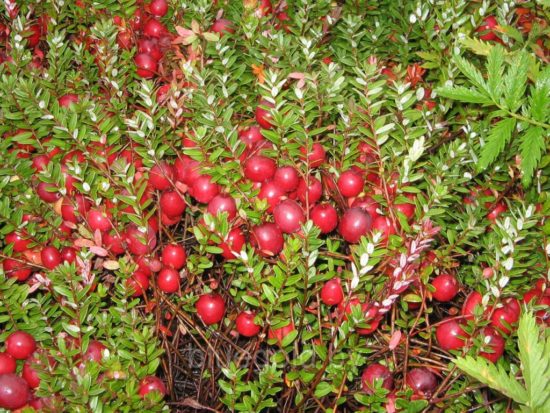
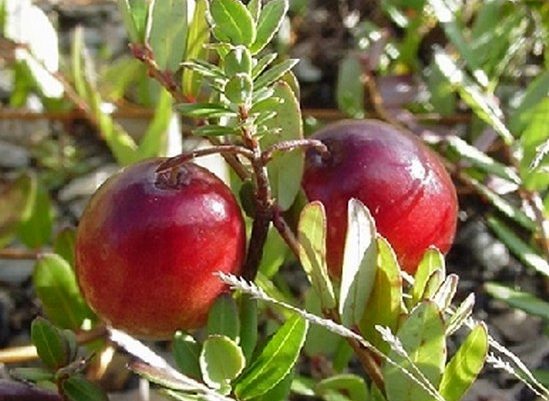
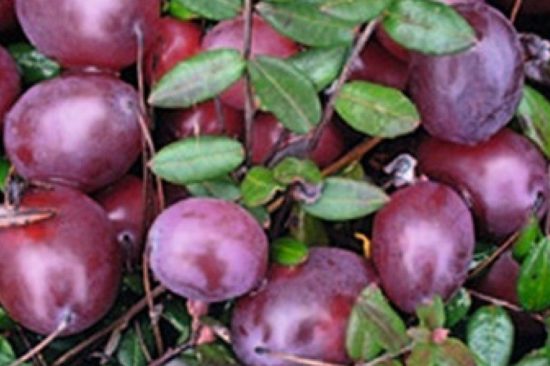
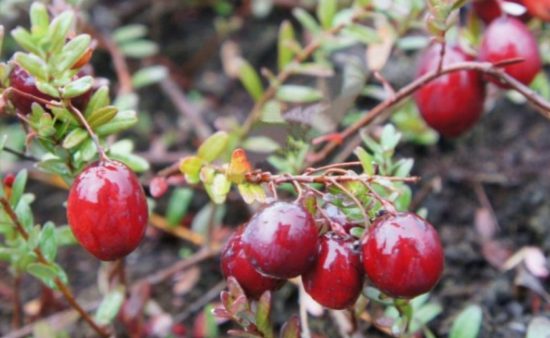
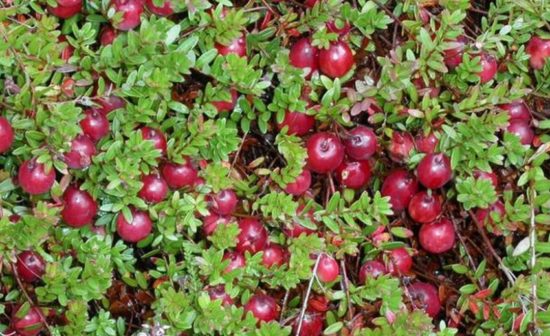

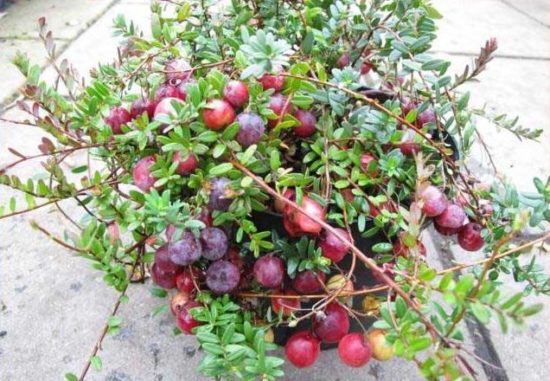
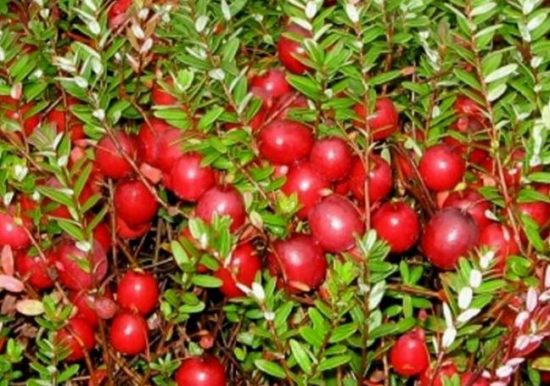
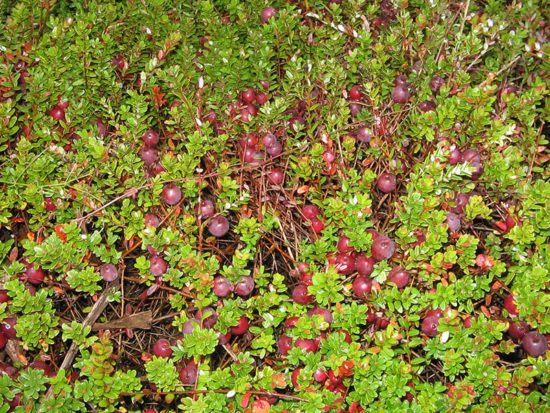
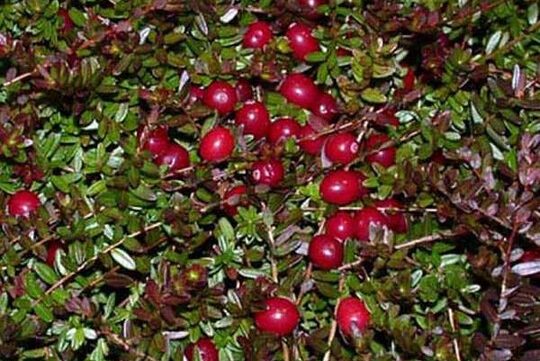
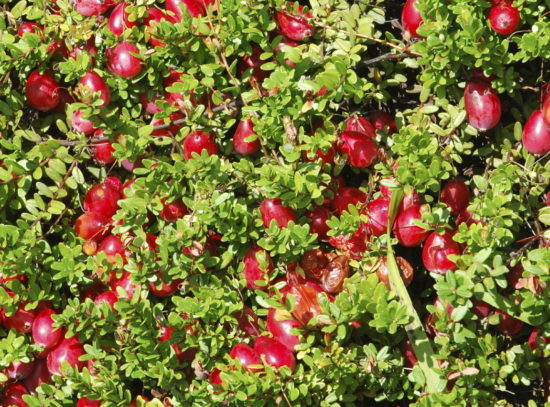
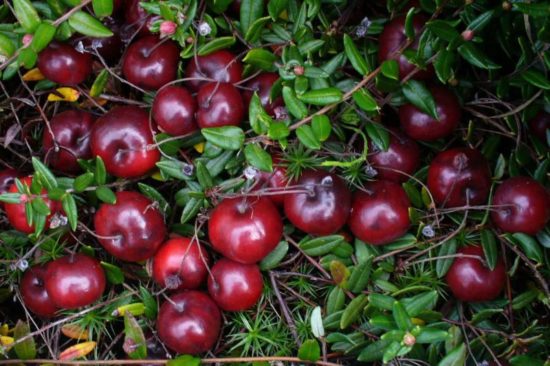

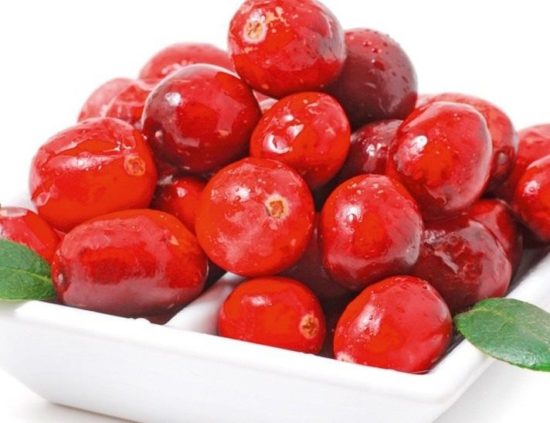

 CUCUMBERS NEVER GET SICK, I'VE BEEN USING ONLY THIS FOR 40 YEARS! I SHARE A SECRET WITH YOU, CUCUMBERS ARE LIKE THE PICTURE!
CUCUMBERS NEVER GET SICK, I'VE BEEN USING ONLY THIS FOR 40 YEARS! I SHARE A SECRET WITH YOU, CUCUMBERS ARE LIKE THE PICTURE! You can dig a bucket of potatoes from each bush. Do you think these are fairy tales? Watch the video
You can dig a bucket of potatoes from each bush. Do you think these are fairy tales? Watch the video
 How our fellow gardeners work in Korea. There is a lot to learn and just fun to watch.
How our fellow gardeners work in Korea. There is a lot to learn and just fun to watch. Eye trainer. The author claims that with daily viewing, vision is restored. They don't charge money for views.
Eye trainer. The author claims that with daily viewing, vision is restored. They don't charge money for views. A 3-ingredient cake recipe in 30 minutes is better than Napoleon. Simple and very tasty.
A 3-ingredient cake recipe in 30 minutes is better than Napoleon. Simple and very tasty. Therapeutic exercises for cervical osteochondrosis. A complete set of exercises.
Therapeutic exercises for cervical osteochondrosis. A complete set of exercises. Which indoor plants match your zodiac sign?
Which indoor plants match your zodiac sign? What about them? Excursion to German dachas.
What about them? Excursion to German dachas.